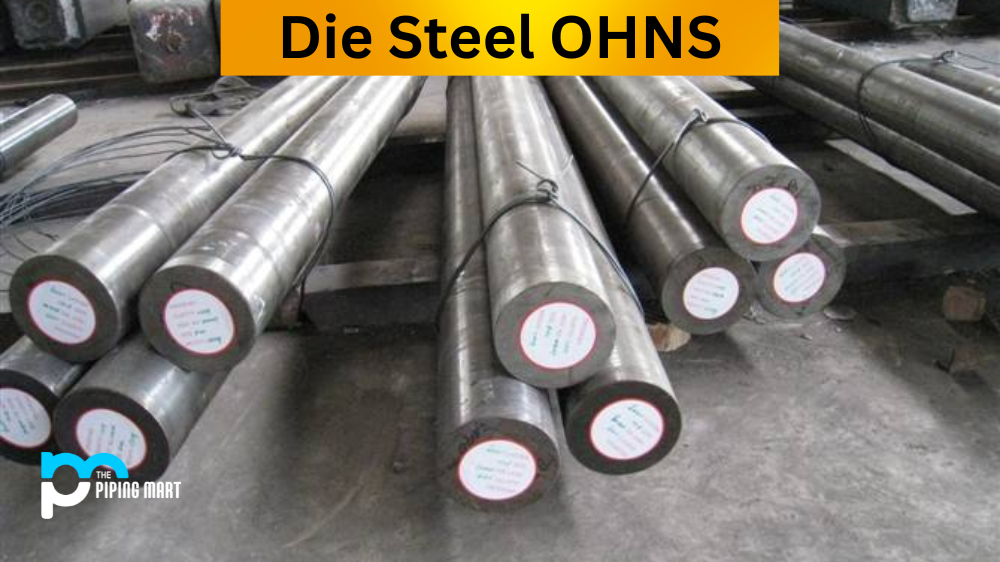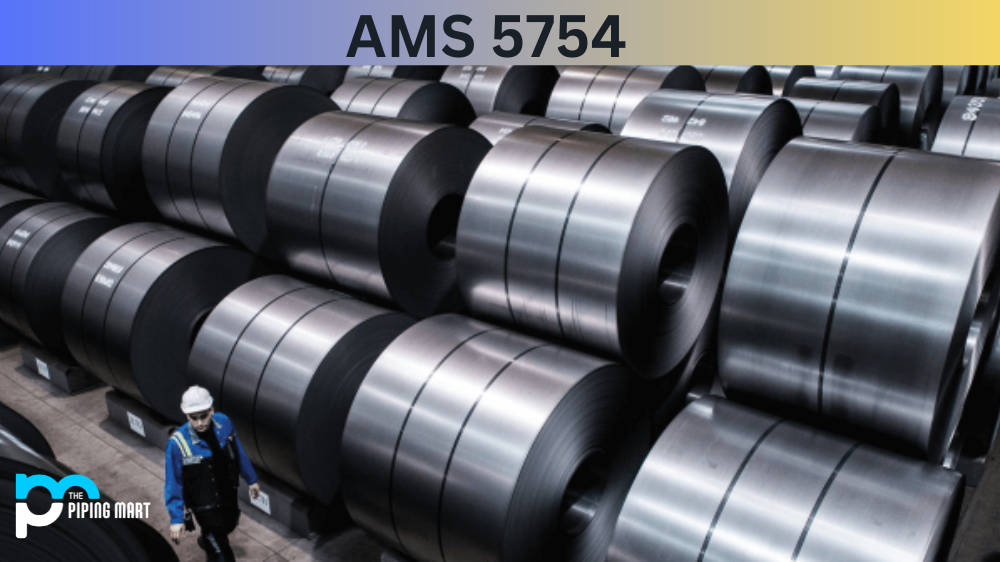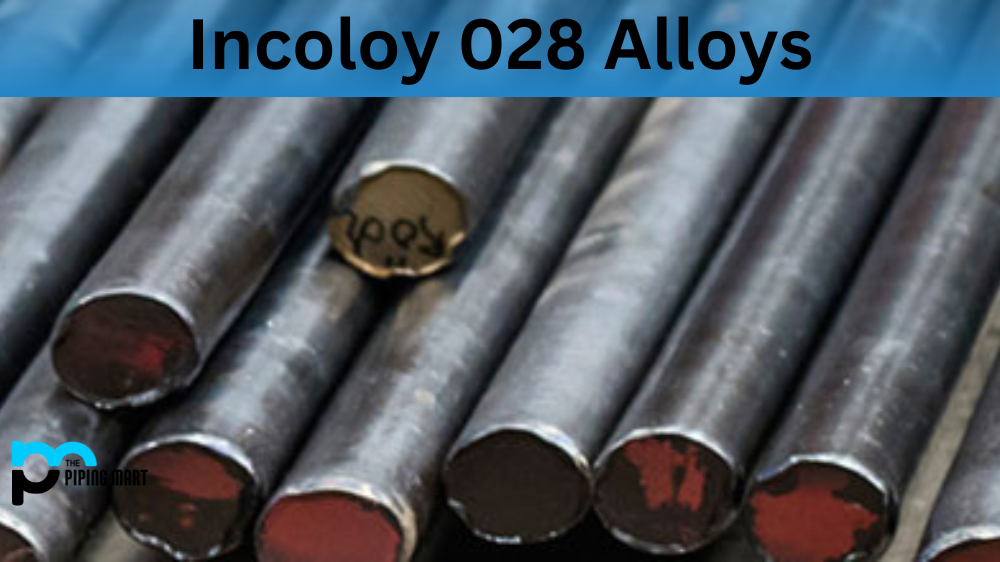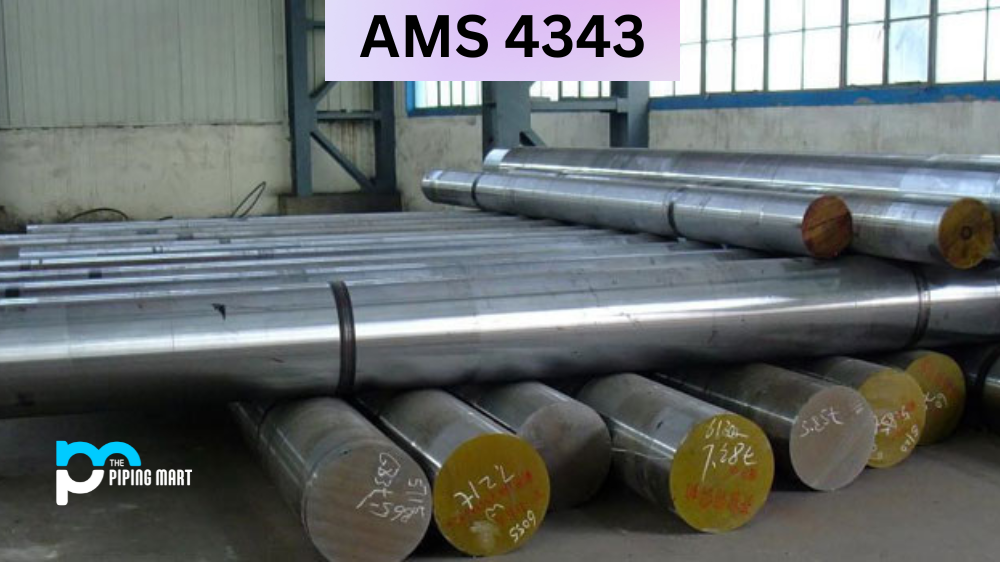OHNS Die Steel is a widely popular grade of steel used for manufacturing various tools and dies. It is well known for its excellent toughness, wear resistance, and heat resistance. The composition of OHNS Die Steel is made up of a mixture of elements like tungsten, chromium, vanadium, and molybdenum that contributes to these exceptional properties. For metal workers, finding the right material for their projects is incredibly important. This type of steel has a wide range of applications and offers great versatility. But what exactly is die steel OHNS, and how can it be used? Let’s take a closer look at this fascinating material.
What Forms of OHNS Die Steel is Available at Piping Mart?
- Nut
- Bar
- Bolt
- Pipe
- Screw
- Tubing
- Valves
- Washers
- Flanges
- Fasteners
- Electrodes
- Stud Bolts
- Sheet Plates
- Pipe Fittings
- Forged Fitting
- Instrumentation Fittings
What is Die Steel OHNS?
Die steel OHNS stands for Oil Hardened, Non-shrinking Steel. It has a high carbon content, making it both strong and durable. This makes it ideal for machining components that need to withstand high levels of pressure or extreme temperatures. Die steel OHNS also has excellent resistance to corrosion and wear, which makes it suitable for use in machinery with harsh operating conditions.
OHNS Die Steel Composition
|
Element |
C |
Si |
Mn |
P |
S |
Cr |
W |
|
Content(%) |
0.85-1.00 |
0.15-0.35 |
1.00-1.20 |
0.03 Max |
0.03 Max |
0.50-0.70 |
0.50-0.70 |
OHNS Die Steel Physical Properties
|
Thermal Conductivity at °C |
W / (m*K) |
|
20 |
33.4 |
|
350 |
32.1 |
|
700 |
31.1 |
OHNS Die Steel Mechanical Properties
|
Maximum Stress(N/mm²) |
Yield Stress(N/mm²) |
Elongation |
Impact Strength (joule) |
Hardness value (BHN) |
|
950 |
465 |
10% |
25 |
288 |
OHNS Die Steel Equivalents
|
STANDARDS |
100MnCrW4 |
O1 |
DIN 2510 |
AISI O1 |
AFNOR 90MWCV5 |
JIS SKS3 |
OHNS Die Steel Uses
The wide range of properties offered by die steel makes it suitable for many different types of applications. It’s commonly used in the manufacturing process to create dies and molds that are capable of withstanding high levels of pressure and stress without deforming or breaking down over time. It can also be used to create tools such as punches, shearing blades, and more. In addition, die steel can be used in the construction industry to create components that need to be resistant to weathering or corrosion, such as structural beams or columns.
OHNS Die Steel Uses in Industries
- Automotive Industry
- Tool and Die Making Industry
- Aerospace Industry
- Construction Industry
- Oil and Gas Industry
OHNS Die Steel Corrosion Resistance
One of the main benefits of using die steel OHSN is its excellent resistance to corrosion. The high carbon content gives it an additional layer of protection against rusting or other forms of corrosion, making it suitable for even the harshest working environments. Additionally, due to its hardness and strength, die steel is resistant to abrasion, which further increases its longevity even when exposed to abrasive surfaces or substances.
OHNS Die Steel Heat Resistance
In addition to being resistant to corrosion, die steel OHSN is also highly heat-resistant, which makes it ideal for use in industries like automotive or aerospace, where components must endure high temperatures on a regular basis without becoming damaged or deformed over time. This makes die steel an excellent choice when looking for materials that are capable of withstanding extreme temperatures without compromising their structural integrity or performance capabilities.
OHNS Die Steel Heat Treatment
For most types of metals, heat treatment is essential if they are going to perform well under duress over long periods—and this applies especially when dealing with die steels like OHSN since they require higher levels of heat treatments than other metals due to their higher carbon content. Heat treatments involve subjecting the metal pieces to high temperatures followed by cooling them down rapidly through quenching, which helps improve their strength and toughness while still retaining their malleability and flexibility so that they can still be worked with after heating treatments have been completed successfully. This helps ensure that your finished product will last longer under heavy usage without having any problems with fatigue or failure due to improper heat treatment procedures being applied beforehand.
OHNS Die Steel Machining
Die steels like OHSN are incredibly tough materials which makes them difficult but not impossible when it comes down to machining them into desired shapes or sizes depending on the application they’re intended for. Due to their hardness, they may require special cutting tools made from harder materials like carbide-tipped blades instead of traditional cutting blades since these special blades can cut through harder metals more effectively than regular ones. However, once you have the right equipment, machining OHSN should be fairly straightforward since all you need do is follow basic cutting procedures just like you would normally do when working with softer metals.
OHNS Die Steel Welding
Welding OHSN isn’t impossible either, although there are certain precautions that one needs to take before attempting to weld these tough materials together. Due to their higher carbon content, normal welding techniques won’t work as effectively as one would hope — instead, special welding techniques such as gas tungsten arc welding (GTAW) should be employed instead if one wants to achieve a successful weld between two pieces made out OHSN. You may also need filler rods specifically designed to handle higher heats associated with welding tougher metals together successfully, so always keep those handy before attempting any kind of welding job involving steels like these!
Conclusion:
In conclusion, die steel OHSN offers many advantages compared to other types of metals due to its unique combination of strength, durability, heat resistance, machinability & weldability. Not only does this make the ideal choice for creating moulds & dies, but also useful for component production, where parts must be able to withstand harsh conditions without compromising performance capabilities over time. If you ever find yourself needing to rely on tough metal parts, then definitely consider using something like die steel because chances are you won’t regret doing so!

Abhishek is a seasoned blogger and industry expert, sharing his insights and knowledge on various topics. With his research, Abhishek offers valuable insights and tips for professionals and enthusiasts. Follow him for expert advice on the latest trends and developments in the metal industry.




